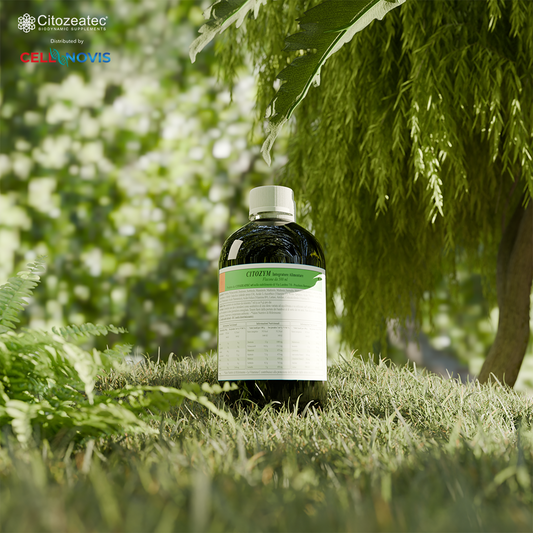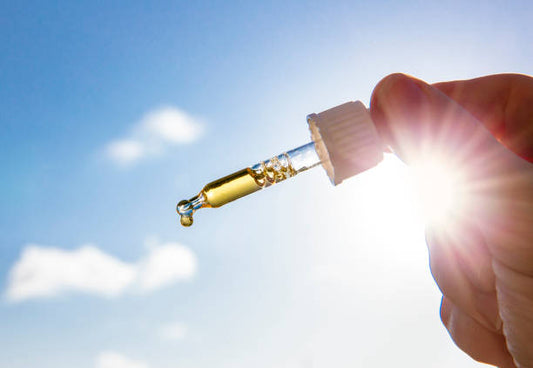Discover Related Products
Now explore supplements designed to support Longevity, Gut Health & Cellular Vitality.
CITOZYM - Support Natural Detox, Immune and Longevity Support
The Ultimate Guide to Understanding and Treating Cellulite: Causes, Risk Factors, and Effective Solutions

Table of Contents
2. Causes and Pathogenesis of Cellulite
-
The Role of Hormones in Cellulite Development
-
Microcirculation and Connective Tissue
-
Inflammation, Oxidative Stress, and Adipocytes
3. Risk Factors and Prevalence of Cellulite
-
Genetics and Predisposition
-
Lifestyle, Diet, and Personal Habits
-
The Impact of Aging and Menopause
4. Effective Treatments for Cellulite
-
Topical and Non-Invasive Treatments
-
Energy-Based Devices and Advanced Technologies
-
Minimally Invasive and Innovative Approaches
-
Benefits of a Balanced Diet and Exercise
6. Future Outlook: New Frontiers in Cellulite Treatment
7. Conclusion
8. References
1. Introduction to Cellulite
Cellulite is a widespread cosmetic concern that affects millions of women globally, often having a significant impact on body image and self-esteem. While it’s not classified as a medical condition, the characteristic appearance of “orange peel” or “cottage cheese” skin can affect up to 98% of women after puberty (1-6). This article provides an in-depth look into the causes of cellulite, its risk factors, and the latest treatments and technologies designed to reduce its appearance.

Figure 1: Cellulite grade at grade II (i), grade III (ii) and grade 4 (iii) at rest (a) and after gluteal contraction (b). (5)
2. Causes and Pathogenesis of Cellulite
Cellulite results from a complex interplay of hormones, adipose tissue, microcirculation, and connective tissue. Though it’s often viewed as an aesthetic issue, its underlying mechanisms involve multiple biological systems, making its treatment challenging.
The Role of Hormones in Cellulite Development
Hormones, particularly estrogen, are key players in the formation of cellulite. Hormonal fluctuations during puberty, pregnancy, and menopause alter fat distribution and water retention, creating favorable conditions for cellulite (9). A reduction in collagen production and decreased skin elasticity, often due to hormonal changes and aging, further exacerbate the problem (1).
Microcirculation and Connective Tissue
Impaired local microcirculation reduces blood flow and lymphatic drainage, leading to fluid accumulation in the tissues. This buildup contributes to the formation of fibrous nodules beneath the skin (4). Furthermore, the structure of connective tissue in women differs from that in men, allowing fat cells to protrude into the dermis, creating the characteristic dimples of cellulite (6).

Figure 2: Gluteofemoral adipose tissue (gfWAT) with and without cellulite. (A) gfWAT without cellulite: SCD1 (stearoyl-CoA desaturase) and resulting palmitoleic acids are generally increased in gluteofemoral adipose tissue (gfWAT). (B) gfWAT with cellulite: The thicknesses of SAAT and sWAT increase, respectively, about twofold and sixfold; MMP14 is strongly increased, producing conditions for the invasiveness of SAAT/dWAT into the dermis; fibulin-3 is strongly diminished, causing a reduction of elastic fibers and conditions for tissue herniation/prolapse; the number of the MUSE cells is dramatically increased.(4)
Inflammation, Oxidative Stress, and Adipocytes
Chronic low-grade inflammation and oxidative stress are emerging as major contributors to cellulite development. Enlarged fat cells in cellulite-prone areas release pro-inflammatory cytokines that worsen the condition and accelerate the breakdown of collagen (2-5). These processes lead to the formation of fibrous tissue and enhance the skin’s irregular texture.
3. Risk Factors and Prevalence of Cellulite
Cellulite affects women of all body types, not just those with higher body weight or a high body mass index (BMI). Several factors, including genetics, hormones, and lifestyle choices, can influence its development.

Figure 2: Subcutaneous gluteal architecture in females. Structure and arrangement of skin and subcutaneous tissue in individuals with (A) low-to-normal BMI or (B) high BMI. The arrows demonstrate the interplay of biomechanical forces (red arrows: outward force of fat lobules; lavender arrows: inward tethering force of the septal network, with illustrated dimorphism between the numerous short and thin septa [small lavender arrows] vs the fewer long and thick septa, which have greater stability [large lavender arrows]; yellow arrows: inward containment force of the dermis). BMI, body mass index. (7)
Genetics and Predisposition
Genetics play a significant role in the likelihood of developing cellulite. Women with a family history of cellulite are more prone to it, as fat distribution, skin structure, and connective tissue strength are largely hereditary (2). Genetic factors can also affect how the skin regenerates and its overall resilience (10).
Lifestyle, Diet, and Personal Habits
An unhealthy lifestyle, poor diet, smoking, and excessive alcohol consumption can all worsen. An unhealthy lifestyle, poor diet, smoking, and excessive alcohol consumption can all worsen cellulite. A diet high in fats, sugars, and processed foods encourages the buildup of subcutaneous fat and worsens lymphatic drainage (8). On the flip side, an active lifestyle helps maintain muscle tone and reduces fat accumulation, making cellulite less noticeable (3).
The Impact of Aging and Menopause
Aging is one of the biggest contributing factors to cellulite. As skin ages, it loses elasticity and firmness due to a decline in collagen and elastin production. During menopause, hormonal changes slow metabolism and encourage fat storage in areas where cellulite commonly appears, such as the thighs and buttocks (9).
4. Effective Treatments for Cellulite
In recent years, advancements in cellulite treatments have provided new ways to address this common concern. From topical treatments to high-tech devices like radiofrequency and lasers, there are various options available.
Topical and Non-Invasive Treatments
Many anti-cellulite creams contain ingredients like caffeine, retinoids, and xanthines, which help stimulate blood flow and break down fat cells (3). While these treatments can temporarily improve skin texture, they often require consistent use to maintain results (2).
Energy-Based Devices and Advanced Technologies
Non-invasive technologies like radiofrequency (RF), lasers, and cryolipolysis are gaining traction for treating cellulite. These treatments stimulate collagen production, improve skin texture, and reduce fat deposits. Radiofrequency, in particular, tightens connective tissue, making the skin look firmer (6). Cryolipolysis, on the other hand, works by freezing fat cells, which the body then naturally eliminates over time (10).
Minimally Invasive and Innovative Approaches
For longer-lasting results, minimally invasive procedures such as subcision or the Nd:YAG 1440 nm laser are highly effective. These techniques break the fibrous bands pulling the skin down, which smooths the skin’s surface and reduces the appearance of cellulite (6, 10). Dermal fillers and collagen injections can also help fill out areas of the skin affected by cellulite, offering a significant cosmetic improvement (3).
Benefits of a Balanced Diet and Exercise
Maintaining a healthy diet rich in fiber, vitamins, and antioxidants, along with regular physical activity, plays a vital role in reducing cellulite. Exercise improves circulation, tones underlying muscles, and helps prevent fat accumulation, all of which contribute to a smoother, firmer skin appearance (8). A healthy lifestyle is one of the most effective long-term strategies for preventing and minimizing cellulite.
5. The Link Between Cellulite and Metabolic Syndrome
Recent research suggests a potential connection between cellulite and metabolic syndrome, a condition characterized by obesity, insulin resistance, and chronic inflammation (8). Both conditions share common risk factors, such as hormonal imbalances and adipose tissue dysfunction. The chronic inflammation associated with metabolic syndrome may also worsen the appearance of cellulite, highlighting the importance of addressing underlying metabolic health (8).
6. Future Outlook: New Frontiers in Cellulite Treatment
Advancements in cellulite treatment continue to explore new technologies, such as acoustic wave therapy and ultrasound, which aim to improve skin elasticity and reduce fat deposits (2). Combination therapies, which use multiple treatment modalities together, are becoming a popular choice for achieving more comprehensive and lasting results. These combinations of non-invasive methods and topical treatments may represent the future of cellulite management (8).
7. Conclusion
Cellulite is a complex cosmetic issue that requires a multi-faceted approach for effective treatment. While no single treatment can completely eliminate cellulite, combining advanced technologies, minimally invasive procedures, and healthy lifestyle choices can significantly reduce its appearance and improve skin tone. With ongoing advancements in treatment options, the future holds promise for more personalized and effective solutions for those seeking to combat cellulite.
8. References
2. Tokarska K, et al. “Cellulite: a Cosmetic or Systemic Issue? Contemporary Views on the Etiopathogenesis of Cellulite.” Adv Dermatol Allergol. 2018; XXXV(5):442–446.
3. Sadick N. “Treatment for Cellulite.” International Journal of Women’s Dermatology. 2019;5:68-72.







No comments